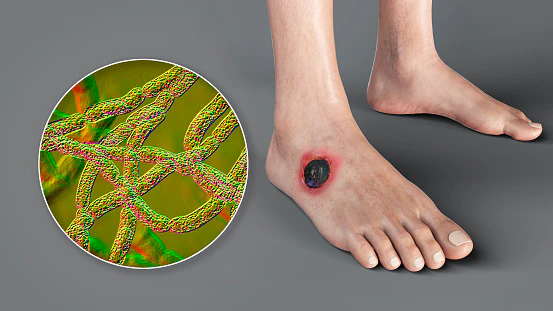How Google DeepMind’s AI breakthrough could revolutionise chip, and battery development (India Today)

- 14 Dec 2023
Why is it in the News?
The World Health Organisation (WHO) has reported a significant anthrax outbreak in Zambia, marking an alarming spread of the disease across nine out of the country's ten provinces.
What is anthrax?
- According to Centres for Disease Control and Prevention (CDC), anthrax is a highly infectious disease that is caused by the gram-positive, rod-shaped bacteria known as Bacillus anthracis.
- Although it affects animals like cows, sheep, and goats, humans can get sick if they come in contact with infected animals or contaminated animal products.
- Anthrax is not contagious, which means we can't catch it from another person like the cold or flu.
Symptoms of anthrax:
- The disease manifests in three forms depending on the route of infection: cutaneous, gastrointestinal, and inhalational.
- Cutaneous anthrax, the most common form, presents with itchy bumps that develop into black sores, often accompanied by fever and muscle aches.
- Gastrointestinal anthrax resembles food poisoning initially but can escalate to severe abdominal pain and bloody diarrhoea.
- Inhalational anthrax, the deadliest form, starts with cold-like symptoms before progressing to severe respiratory distress and shock.
How is anthrax diagnosed?
- Anthrax can be diagnosed by identifying Bacillus anthracis in blood, skin lesions, or respiratory secretions through laboratory culture, PCR, or ELISA tests.
- While there is no specific test to determine exposure to anthrax, public health investigations play a crucial role in identifying potential cases.
Treatment for anthrax:
- Treatment for anthrax is available and includes antibiotics such as ciprofloxacin, doxycycline, or levofloxacin.
- If diagnosed early, antibiotic treatment can cure most anthrax infections.
- In severe cases, hospitalisation and treatments like continuous fluid drainage and mechanical ventilation may be necessary.
- Vaccines are also available for both livestock and humans, although human vaccines are typically reserved for those at high occupational risk.
